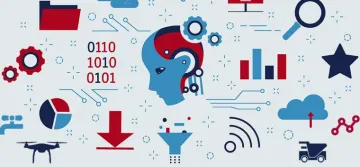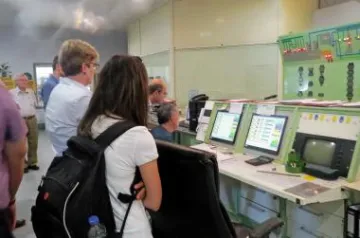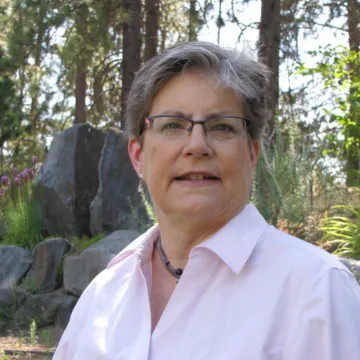Artificial intelligence (AI) and neural networks are technology from the future. Or are

they?
Mary Poulton, Co-Director of the Lowell Institute for Mineral Resources, has been researching the two subjects and their roles in the mining industry for decades. After being introduced to AI when she was in graduate school, back when the topic was starting to open as a research field, Poulton has continued to enjoy seeing the technology progress over the years.
“People have the impression that this happened recently and suddenly, but it’s really been continuous high levels of research and funding for 50 years,” Poulton says. At first, researchers couldn’t gather enough data to make their models work, despite the foundational mathematics being ready to test. The Internet had not yet reached the wide spread it spans today. Even then, the limited computing power of the time severely inhibited the ability to manage any large data sets they could collect.
“You got stuck waiting for technology to catch up with the theory,” Poulton says. “Now that we have the computers and the cloud storage and the huge data sets that Google and Facebook and others can generate, it’s almost become just normal now.”
Modern tools have changed the game in the big data world. Cloud services with Amazon, Microsoft and other major players made managing data as easy as a few clicks. AI researchers realized that NVIDIA graphics processing units—the same kind used in a lot of personal computers—were also great for use with neural networks, since they do the same kind of processing.
More than meets the eye
A common fear is that AI will take away jobs from hardworking humans. If companies already have a staff of people to look at the data, what’s the point of artificial intelligence? Poulton believes AI is not about replacing people, but rather helping them do their jobs better.
“If you can take away some of the drudge work, where I lose attention and maybe I make a mistake, I can do what I, as a human, can do best—which is think about it and make decisions,” Poulton says. “That’s how you turn people from data processors into database decision-makers.”
According to Poulton, data tells a story, albeit not always the most interesting tale. AI is a method to translate that story and visualize it for people in a way that they can understand, similar to how some applications use graphs and time lapses to convey their message. It’s all about appealing to the senses and pathways in the brain that intellectually and emotionally relate to the data in the story.

Mary Poulton - in blue shirt - in a desalination plant in Malta
There’s also a lot more to AI than the typical stories like self-driving cars—autonomous haul trucks in mining—or robotics. For example, Poulton uses neural networks to tell the story of water resources both on local levels and on a country-wide scale. In her research, neural nets work with optimization to map changes experienced by aquifers over time. With those models, people can determine which wells to pump and when. The same process is easily applied to other resources, like ores and minerals.
AI works kind of like a filter, taking the unmanageable flood of data and sorting it so that the humans can get to the most important information right away. A filter hat gives the people in charge space to make decisions instead of wasting time processing the data. Ultimately, the goal is to establish better resource management, better environmental protections, and safer environments for workers regardless of field or profession.
“It’s an area where, I think, the water agencies at the government scale, as well as the actual providers of water, are just starting to accept that these mathematical tools are out there. They’re not just a research project and we can implement them commercially,” Poulton says. “It’s been a long path to get people to accept that these tools are not science fiction.”
How useful is AI?
Just like any powerful tool, AI and neural networks have the potential to be mismanaged. “You never want to just say I don’t understand this, so I’ll just trust you know what you’re doing,” Poulton says.
Without the help of people providing information, big tech companies would never have amassed the datasets needed to advance the technologies, but it’s important to remember that information, like water, is an incredibly valuable resource. Although most data online are freely given, the use and user can change in an instant. Privacy is going to become a bigger issue than it is even now.
“I think you can look back over a very large social experiment that’s taken place over the last 20 years. A historian later can question whether this was a good experiment or a bad experiment,” Poulton says.
Privacy is relevant in mining, too. People deserve access to the data that drives decisions about precious resources, but it’s only fair that companies will want to protect their own businesses. There’s a huge opportunity for transparency in the industry, and balance is going to be key as AI technology continues to grow and evolve.
“At the end of the day it really is about what humans need and want and how we interact better with our environments. How we interact better with our fellow humans on the small and large scale,” Poulton says. “To me, the piece you never want to lose is the human piece.”


